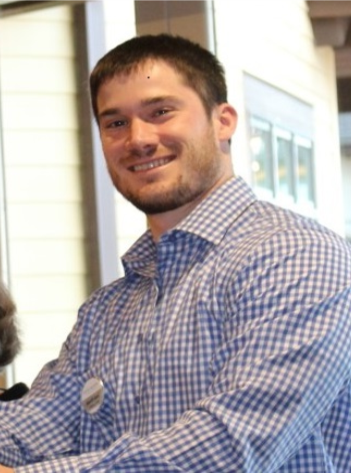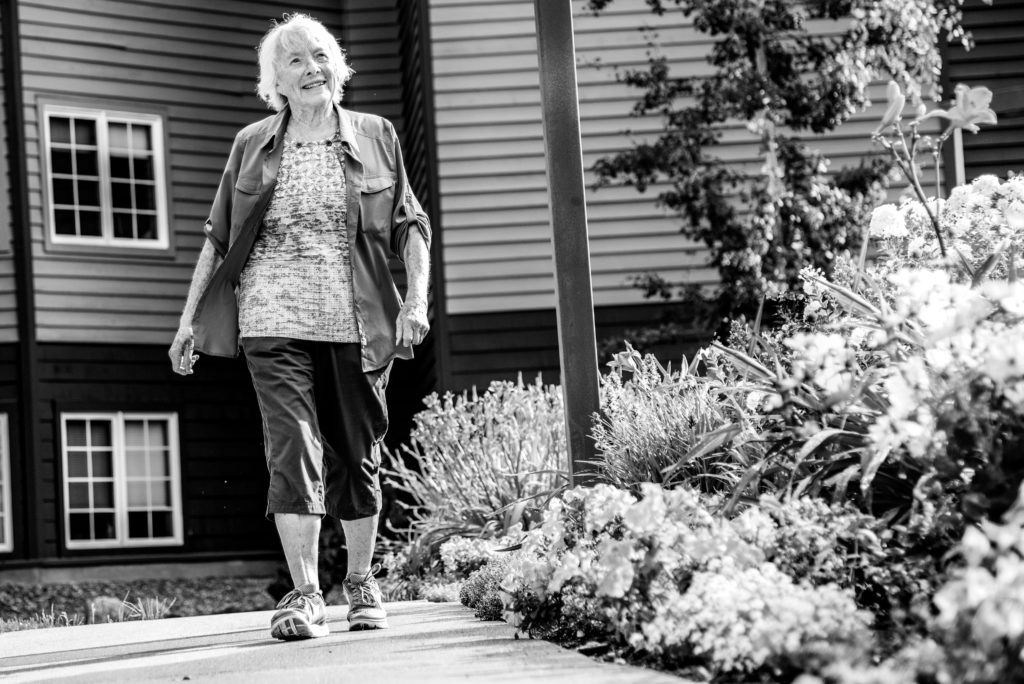
As you may know, Immanuel Lutheran Communities recently opened a new fitness center and exercise classroom at Buffalo Hill Terrace. Independent and Assisted Living residents now have 24-hour access to a variety of high-quality fitness equipment as well as several scheduled exercise classes each day. While Buffalo Hill Terrace has always offered fitness classes, the new center greatly expands its offerings. Fitness-conscious residents like Lois McClaren now have a place to go where they can improve their health, every day, no matter the weather, without leaving their homes.
With this new Fitness Center comes a new Fitness Coordinator, Todd Roush. Todd is a key part of Immanuel’s fitness strategy, and he has many interesting things to say about fitness for seniors and life at Immanuel. I recently had an opportunity to talk with Todd, and I’d like to share what I learned from and about him.
Todd is a Montana native who grew up in the Flathead Valley. He moved to Washington state for college and graduated in 2015 from Eastern Washington University with a degree in Exercise Science. After college, he worked in physical therapy, first in Idaho and then, when he decided it was time to come home, here in Kalispell. For a while, he directed a work rehab program, helping people who had been injured get ready to go back to work.
Todd’s current role as a fitness coordinator in a retirement community is not what he originally planned for his life. When he graduated with his Exercise Science degree, he planned to work with athletes. His earliest work experience didn’t steer him toward seniors, either—he interned at Cincinnati Children’s Hospital and focused during that time on cardiac and exercise physiology for children. But in his time working in physical therapy, he began to enjoy working with older adults. Simple statistics show that we are more likely to get injured as we get older, so Todd found that many of his clients were seniors. When the opportunity at Immanuel became available, he knew it was a direction he wanted to take.
Todd likes working with seniors because his clients have been many places and had many experiences, but they are still open to learning new things. “I get to teach them more,” Todd said, noting how honored he feels to have something to offer to people who already know so much. He also likes the challenge presented by working with over 100 unique individuals. Each client’s needs are unpredictable, and Todd has to find new ways to help them. In physical therapy, he noted, each type of injury could be treated in a fairly typical way. But when coaching seniors in fitness, Todd has to take each individual’s daily needs into account in order to “plan a unique route for each resident for improving health.”
For seniors who want to improve their health, Todd recommends that they not be afraid to try new things. He encourages his clients not to be afraid of change and new opportunities. The fitness center is full of new, unfamiliar-looking equipment, but those who try it usually like it. Like all new things, it takes some getting used to. That goes for classes, too. But even as they try new things, Todd cautions, seniors should be aware of their limitations and not push themselves too far (this is good advice for everyone!). It’s important to practice exercise safely, and Todd’s available to help residents figure out how to do so.
Living in a community like Immanuel provides residents with unique fitness opportunities, Todd notes. Residents have easy access to a wide variety of fitness opportunities, and they don’t even have to go outside to get to them. That’s especially nice in this winter weather we’ve been having lately! They can also come whenever they want, including early in the morning and late at night. Because there are no restrictions on when residents can use the equipment in the fitness center, they can truly improve their health at their own paces and on the schedules that work best for them.
Another advantage of living in a community is the longer-term relationships residents can form with their fitness professional. While he’s only been at Immanuel for a few months, Todd is already getting to know the residents. These relationships are one of things he’s coming to like best about his job. “This is a huge benefit,” he said.
Looking beyond Immanuel, Todd thinks that the Valley in general could use more senior-friendly fitness opportunities. Residents here have wonderful opportunities and resources available to them now, but that isn’t true for the Valley at large. Even hospital-affiliated fitness centers don’t have the options for seniors that Immanuel has. It’s important to Todd to keep building awareness and knowledge about how people can stay fit throughout their lives, and he’s thrilled to have the opportunity to do that here at Immanuel.
If he’s not teaching, Todd is usually in his office in the fitness center. He’s always available to help residents with the equipment and to answer questions for staff, as well. It’s important to him that people don’t worry about bugging him—“I’m here to be bugged!” he said, so feel free to stop by!



